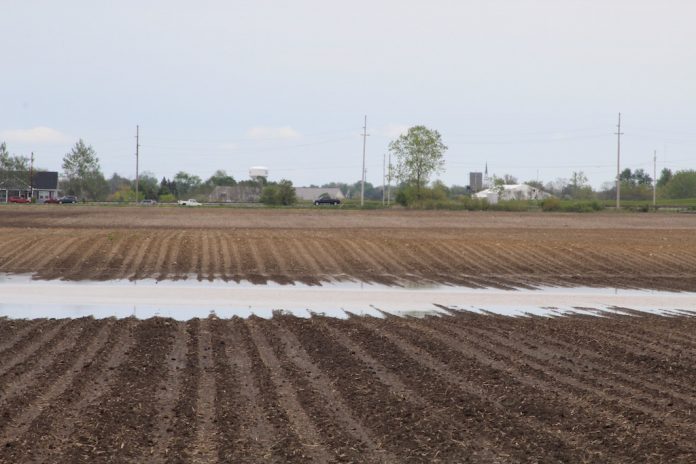This year, the weather has been kooky. According to the National Oceanic and Atmospheric Administration precipitation maps, northeast Ohio saw above average rainfall in May, June and July, followed by significantly below-average rainfall in August and September.
Across the Great Lakes region, few areas are experiencing “average range of precipitation.”
The new normal may be no normal. With perception rates fluctuating wildly across a wide range, farmers need to rethink how they “manage” rainfall.
One strategy to keep rainfall in your fields instead of your neighbor’s property is to improve infiltration rates and thereby increase water-holding capacity — the water held in the soil available for plant use after excess water drains away.
Infiltration rates are influenced by soil type, structure and moisture content at the start of the rain. For example, sandy and gravelly soils have more large pores than fine loams and clays so they have an increased capacity to absorb water during storms.
Soil aggregates
Soil structure or aggregates are also critical. Aggregates are the structures formed when soil minerals and organic matter are bounded together with the help of organic molecules, plant roots, fungi and clays.
Weak structures collapse under the pounding of rainfall and lead to faster saturation, crusting and runoff.
Although farmers can’t switch out soils on their fields, they can influence soil properties. One of the best strategies is to increase soil organic matter. It is estimated that a one percent increase in SOM will increase by 20,000 gallons per acre water retention for plant use.
What is the best tillage system to support improved soil structure? No-till. It preserves macrospores and structural integrity in the soil, which promotes water infiltration and nutrient flow.
In a study conducted at University of Nebraska at Lincoln Rodgers Memorial Farm, a field under no-till for 25 years was able to absorb 4 inches of rain, whereas a field tilled the same number of years was only able to infiltrate 0.4 inches.
Similar results were reported for 30-year fields. Another management practice to increase infiltration is to leave plant residue in fields. Stovers and other residue act as miniature dams that slow runoff velocity, absorb the energy of rainfall drops, reduce the amount of soil transported, and lessen the number of soil particles swept away by flowing water.
By slowing down the water, there is more time for it to infiltrate.
In addition, residue protects the soil from sun and wind, reducing losses through evaporation, and keeps the soil surface cooler in the summer heat, allowing better root development during the growing season.
Managing water
As is often the case in life, too much of a good thing is bad. Failure to manage the extra water may result in wet, cold soil, which could delay seed germination, and it can increase nutrient leaching beyond the root zone.
Practices to account for the increased water include but are not limited to increasing seeding and fertilizer rates for higher yields, implementing more intense and diverse crop rotations, cover crops, and/or double cropping.
Leaching is a particular concern. On the one hand, no-till and other conservation practices promote fertile soils by increasing microbial activity and soil aggregates.
On the other hand, healthy soils have higher levels of nitrification (ammonium to nitrate) and create enhanced pathways, which can lead to increased transport of nutrients (organic and synthetic) into tile lines and waterways.
This often results in noxious algae blooms and other negative environmental concerns.
What is the “big picture” take away? Nature is tightly interwoven. You can’t tug on one thread without pulling on other threads. Farmers know and live this truth every day.













